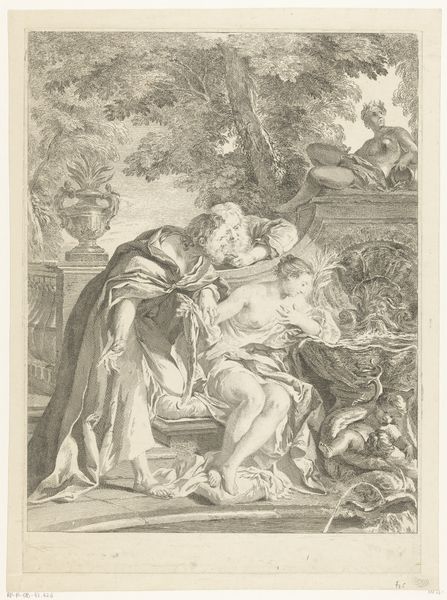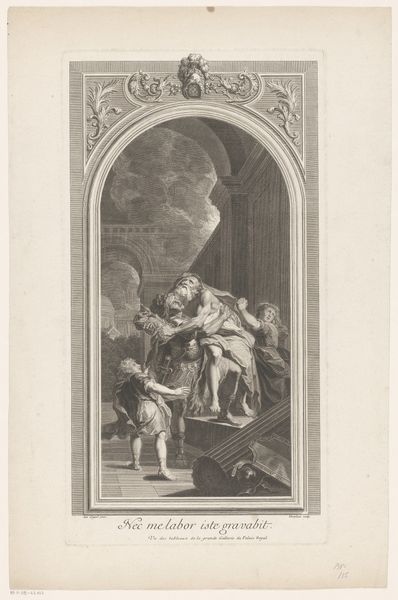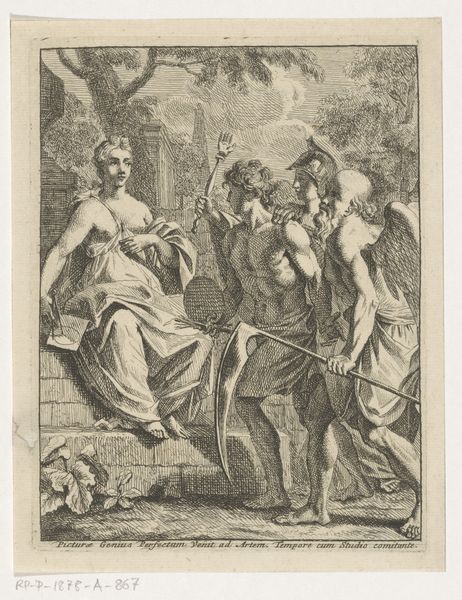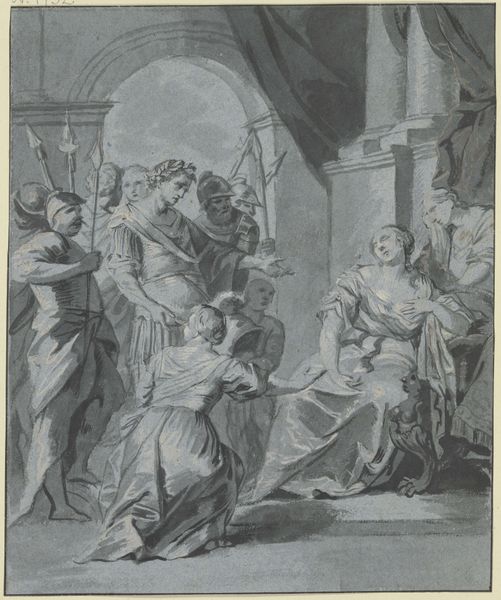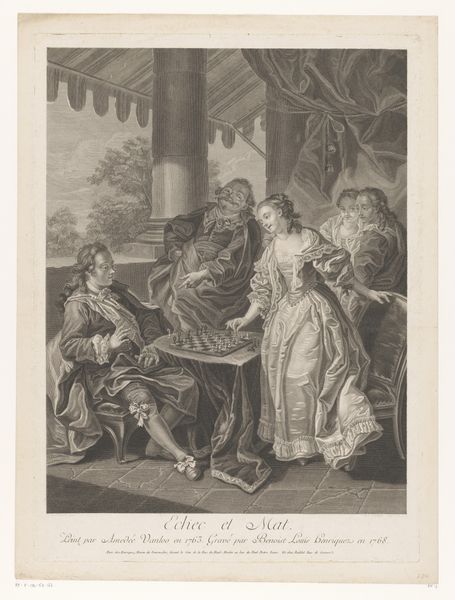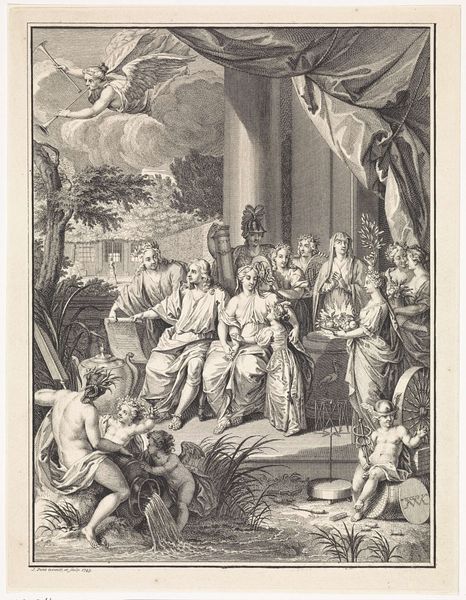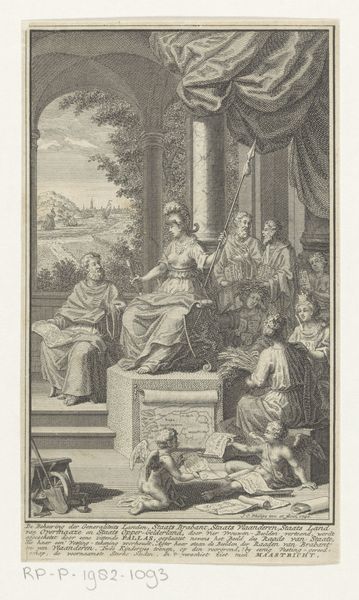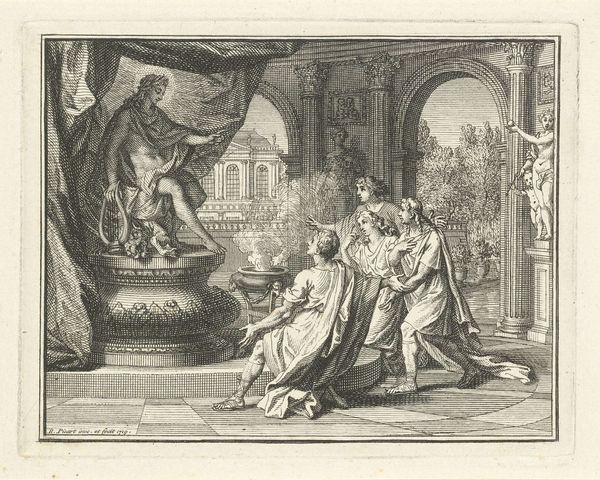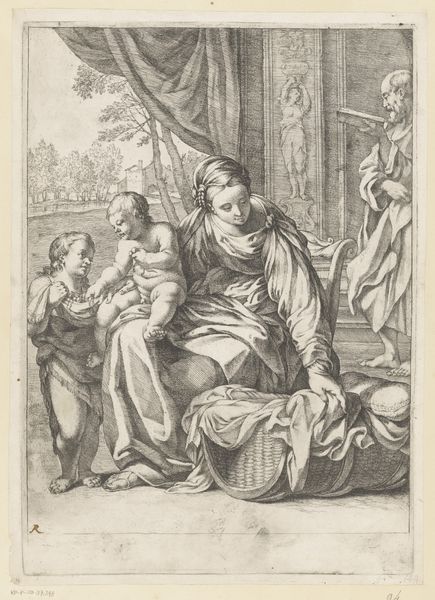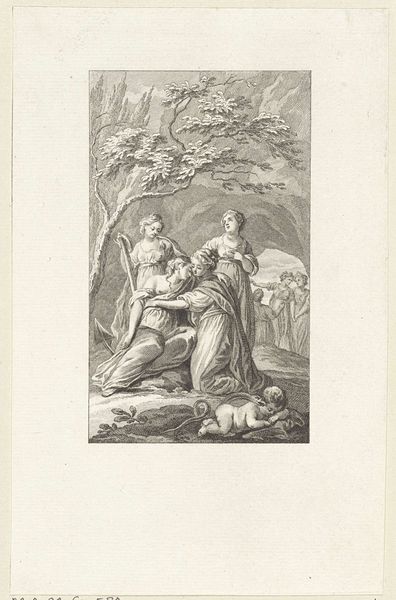
engraving
#
baroque
#
old engraving style
#
figuration
#
history-painting
#
engraving
Dimensions: height 167 mm, width 124 mm
Copyright: Rijks Museum: Open Domain
Curator: Here we have Sebastien Bourdon's "Visitatie," an engraving housed here at the Rijksmuseum. It was likely created sometime between 1626 and 1671. Editor: Immediately, I’m struck by its graphic quality—the stark lines, the limited tonal range. It's a composition reliant on crisp mark-making and quite balanced symmetrical architecture. Curator: Precisely. Engravings like this served as a primary form of disseminating imagery. Bourdon, as both the inventor and maker here, controls not only the composition, but also the means of reproduction. Think of the economic implications, controlling the supply chain! Editor: Yes, but the graphic style imposes a certain visual language on the scene, dictating how we perceive the space, the light and shadow and the bodies, the robes themselves seem less material. The whole thing feels stylized and distant. Note how the figures form simple tonal areas through the use of hatching. Curator: Though the line work is meticulous and clean, this allows the scripture at the bottom of the composition to clearly state Mary visits Elizabeth in the hill country. The lines translate the image to different demographics. What could not be spoken by many in that time now is seen and consumed. Editor: Indeed. Semiotically, we could examine how the architectural details—the columns, the steps—function as signifiers of authority and stability. This framework literally elevates the main figures, while also highlighting a return to Classicism. Curator: I would like to mention the material properties and Bourdon's access to print making allowed those even in poverty a peak at art and the scriptures. In his own time and through today as we speak the image echoes. Editor: Agreed. Overall, the image, as constructed here, speaks more to a symbolic rendering of religious stories that the pure representation of natural life. Curator: Considering the socio-economic circumstances of its production adds a new dimension, while acknowledging that it can also be appreciated on visual language alone. Editor: And together, the combination of production analysis and its formal construction yields a comprehensive portrait of a work and it’s lasting influence.
Comments
No comments
Be the first to comment and join the conversation on the ultimate creative platform.


